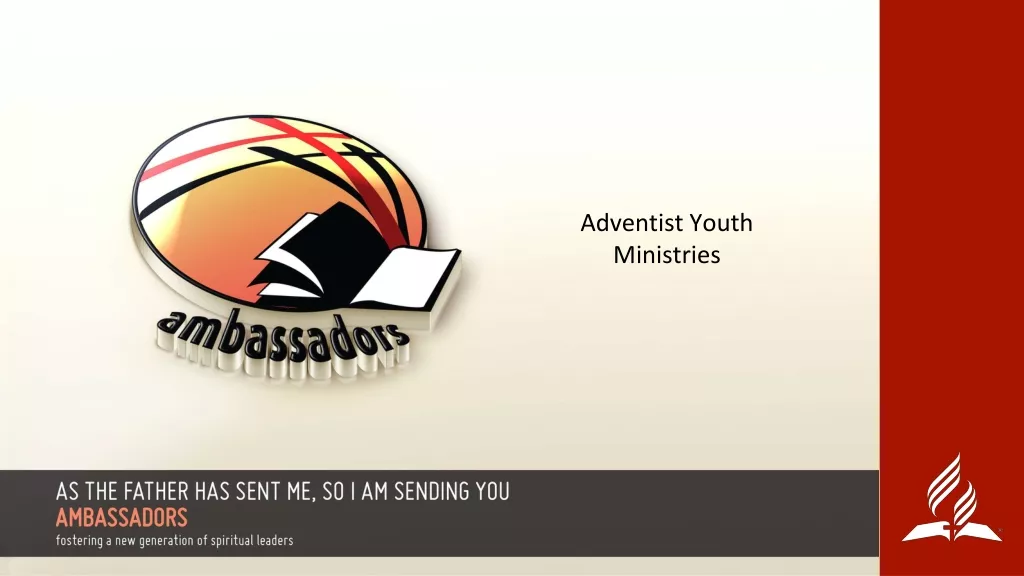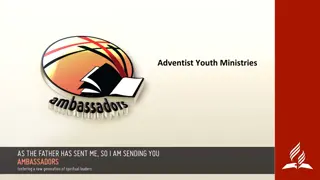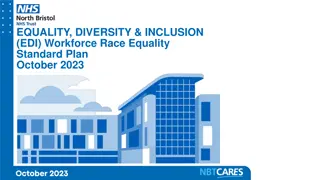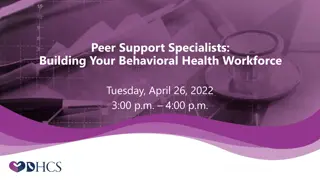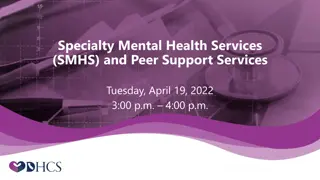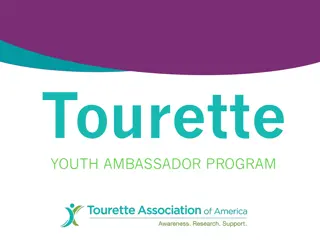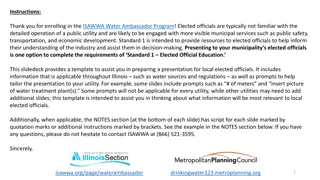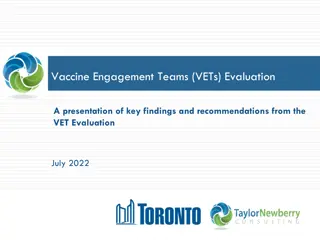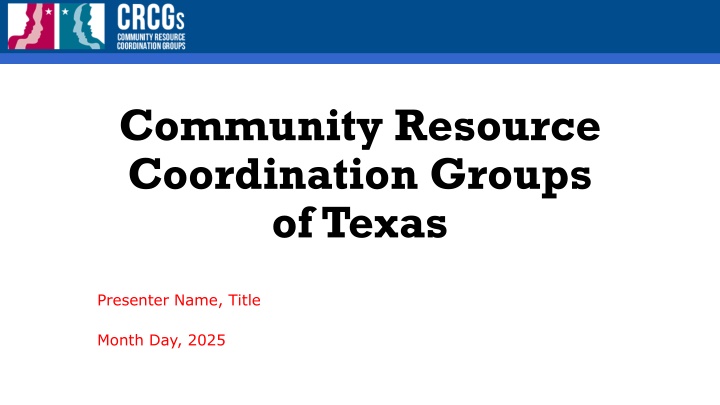
Empowering Texas Communities Through Community Resource Coordination
Explore how Community Resource Coordination Groups in Texas are making a significant impact by coordinating services across various agencies to support individuals and families in need. Learn about eligibility criteria, success stories, and ways to get involved in enhancing community welfare.
Download Presentation

Please find below an Image/Link to download the presentation.
The content on the website is provided AS IS for your information and personal use only. It may not be sold, licensed, or shared on other websites without obtaining consent from the author. If you encounter any issues during the download, it is possible that the publisher has removed the file from their server.
You are allowed to download the files provided on this website for personal or commercial use, subject to the condition that they are used lawfully. All files are the property of their respective owners.
The content on the website is provided AS IS for your information and personal use only. It may not be sold, licensed, or shared on other websites without obtaining consent from the author.
E N D
Presentation Transcript
Community Resource Coordination Groups of Texas Presenter Name, Title Month Day, 2025
Agenda Common Community Resource Coordination Group (CRCG) Members Eligibility Criteria Staffing Process Implementation Across Texas Success Stories CRCGs Impact on Communities How to Support and Get Involved
People and their families Organizations Individual Service Plan (ISP) Local agencies
Texas Education Agency TEA Texas Workforce Commission TWC TJJD Texas Juvenile Justice Department Texas Health and Human Services Commission CRCGs TDHCA HHSC Texas Department of Housing and Community Affairs TDCJ TCOOMMI Texas Department of Family and Protective Services DFPS Texas Department of Criminal Justice Texas Correctional Office on Offenders with Medical or Mental Impairments DSHS Texas Department of State Health Services
Common Community Resource Coordination Group (CRCG) Members Local mental health authority or local behavioral health authority Counseling and other behavioral health providers Local intellectual and developmental disability authority Health care providers Faith-based organizations Local government service providers Community-serving organizations Housing authority Private sector stakeholders, such as managed care organizations Aging and disability resource center Area agency on aging Child and adult protection representatives Peer and family representatives Early childhood intervention services Judges and judicial support offices School districts, education service centers and school counselors Probation and parole officers
Eligibility Criteria People who need multiple agencies to come together to help coordinate services People who need services from more than one agency CRCG may be the right fit
Who can refer? Agency or organization Family or peer representative CRCG member
CRCG Staffing Process The person, family or caregiver attends a staffing meeting with participating CRCG members. Members introduce themselves identifying what agency or services they represent. Welcome The person, family or caregiver share what brought them to the meeting and what they need from the CRCG. Members ask questions to identify strengths and clarify needs to increase their understanding of the circumstances. Information sharing Together, the CRCG, person, family or caregiver identify services and supports that match their identified strengths while addressing their needs. The CRCG, person, family or caregiver review the services together to reach an agreement on the plan. Build the ISP
Keep families together Meet each person s needs Identify gaps and barriers Keep people in the community
CRCG Implementation Across Texas (1 of 3) TEA Non-Educational Community Based (NECB) Support Services Juvenile Justice Diversion Family Engagement Program Non-Educational Community-Based (NECB) Support Services Overview | Region 10 Education Service Center Funds are available for eligible students with disabilities who would remain or would have to be placed in residential facilities for educational reasons without the provision of NECB support services. Non-Educational Community-Based (NECB) Support Services Overview | Region 10 Education Service Center Connects children under 12 with Family Engagement Program - Texas Juvenile Justice Department Family Engagement Program - Texas Juvenile Justice Department needed services to prevent future delinquent conduct and recidivism in the juvenile justice system. Family Engagement Program - Texas Juvenile Justice Department Non-Educational Community-Based (NECB) Support Services Overview | Region 10 Education Service Center Non-Educational Community-Based (NECB) Support Services Overview | Region 10 Education Service Center
CRCGs Implementation Across Texas (2 of 3) North Texas State Hospital Adolescent Forensic Program Waco Center for Youth (WCY) Program provides individualized WCY is a long-term psychiatric Home - North Texas State Hospital Waco Center for Youth | Texas Health and Human Services Home - North Texas State Hospital programming opportunities for a variety of commitments. Maximum security, 32-bed program serving Texas youth ages 13-17. Typical length of stay is nine to 12 months. Home - North Texas State Hospital Waco Center for Youth | Texas Health and Human Services residential treatment facility serving youth ages 13-17 with a psychiatric diagnosis of emotional or behavioral disability with a history of behavior problems in at least two settings. Waco Center for Youth | Texas Health and Human Services
CRCGs Implementation Across Texas (3 of 3) State Supported Living Center (SSLC) Permanency Planning State Supported Living Centers (SSLCs) | Texas Health and Human Services SSLCs provide campus-based direct services and supports to people with intellectual disabilities who are medically fragile, have behavioral challenges or have mental health issues. There are 13 locations across the state, some serving minors. State Supported Living Centers (SSLCs) | Texas Health and Human Services Permanency Planning for Children | Texas Health and Human Services The goal of permanency planning is to support children with developmental disabilities to live in a family setting. This effort targets children living in an institutional setting or those who are at imminent risk of admission to an institution. Permanency Planning for Children | Texas Health and Human Services State Supported Living Centers (SSLCs) | Texas Health and Human Services Permanency Planning for Children | Texas Health and Human Services State Supported Living Centers (SSLCs) | Texas Health and Human Services
CRCG Success Stories (1 of 4) I think every month is a success. It's not just helping the families we staff, but the networking and bond we establish with our members. I love hearing feedback from them when we have been able to help one of their challenging clients. I love when our members refer new members to me, and they thank me for inviting them to join because they have heard such good things about the CRCG. -Janis Burdett, Ellis County CRCG
CRCG Success Stories (2 of 4) The Potter/Randall CRCG continues to see an increase in the children we serve - many with mental health concerns. Several times, parents and families have returned for assistance with resources for other children in their care. This last year, we had children successfully graduate from high school when they were previously at risk for placements. -Ginger Guy, Potter and Randall Counties CRCG
CRCG Success Stories (3 of 4) The McLennan County Adult and Family CRCG had an emergency staffing that full circle closed this year. We had a family who thanked us for the success of our effectiveness and efforts in providing a young woman who was wheelchair bound with person-centered training. She is now living in Florida and working for Disney and is living her life independently. We are super proud of all the agencies that helped this young lady s dreams come true. -Tiffany Soto, McLennan County Adult CRCG
CRCG Success Stories (4 of 4) Bexar County CRCG has grown to a committed group of 29 organizations and 65 participants. The Bexar CRCG participants support our expansion into the Bexar County Children and Youth Behavioral Health System of Care (SOC). The Bexar SOC effort works to harmonize across systems by aligning goals, building trust, and coordinating efforts. The participants are working closer together and helping families navigate across systems to receive services. With the support of State CRCG and the data collection system, we are also paying closer attention to what doesn't exist and working together to raise capacity. Alice Alvarez, Bexar County
CRCGs Impact on Communities Empower people and families by having a voice in their planning. Ensure needs of people and families are met. Help families stay together by connecting people with resources and supports within their community. Create opportunities for communities to collaborate, share resources as well as ideas and identify and fill gaps. Create efficiency and save dollars by reducing service duplication. Enhance all agencies to achieve their mission, vision and goals.
How to Support and Get Involved Become a member or leader. Collaborate with a CRCG to offer services and resources to the community. Refer people to CRCGs when needed. Partner with a CRCG to address gaps in the community. Tell community leaders about the positive impact of CRCGs.
Thank You! Add your contact information here. HHSC CRCG Team CRCG@hhsc.state.tx.us 512-206-5255 crcg.hhs.texas.gov



